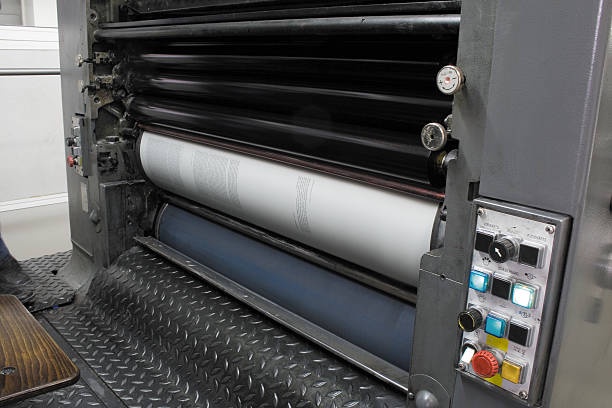Printing by Offset
In the commonly used printing technique known as offset printing, the inked image is transferred (or "offset") from a plate to a rubber blanket, then to the printing surface. When used in conjunction with the lithographic method, which is based on the attraction of water and oil, the offset technique employs a flat (planographic) image carrier on which the image to be printed receives ink from ink rollers while the non-printing area attracts a water-based film (referred to as "fountain solution"), keeping the non-printing areas ink-free.
At the Present, Offset Printing
- Offset lithography is a popular method for manufacturing printed materials. Newspapers, brochures, stationery, and books are just a few examples of what it is commonly used for. In comparison to other printing techniques, offset printing is best suited for producing large volumes of high-quality prints at a low cost and with little maintenance. The use of computer-to-plate technologies rather than the more traditional computer-to-film operations improves the quality of modern offset presses even further.
- Offset printing has the following advantages over other printing techniques:
- Consistently Excellent Visual Quality - Unlike letterpress printing, offset printing produces more precise, clear images and types because the rubber blanket responds to the structure of the printing surface.
Printing plates may be manufactured quickly and easily. - More Durable - Because there is no direct contact between the printing surface and the plate, printing plate life is longer than with direct litho presses. Run times of over a million impressions may be achieved with properly designed plates, appropriate inks, and fountain solutions.
- Budget-Friendly - Offset printing is the least expensive technique to produce high-quality prints in big quantities.
Offset printing also has the advantage of letting you adjust the amount of ink on the fountain roller with screw keys. A metal blade is frequently used to manage the amount of ink delivered from the ink trough to the fountain roller. The amount of ink applied to the roller in specific areas can be increased or decreased by adjusting the screws that govern the gap between the blade and the fountain roller. As a result, the color density in the image's corresponding area changes. Older machines require manual screw adjustment, however, newer machines use electronic screw keys controlled by the printer that operates the machine, yielding a significantly more accurate result.
Offset Advantages
- Excellent image quality.
- Rough paper, plastic, wood, metal, cloth, and paper are all used for prints.
- As the quantity grows, the unit cost decreases.
- High-volume jobs necessitate both quality and cost-effectiveness. While modern digital presses may create high-quality work at a cost-benefit ratio comparable to offset, they cannot yet match offset press volume.
- Many modern offset presses use computer-to-plate systems rather than computer-to-film processes, which enhances quality even further.
Since its inception in 2003, Henan Huida Print-All Technology Co., Ltd has produced 40 million square meters per year on four high-speed production lines. Many European, ASEAN, South Asian, American, and African countries are export destinations. Please contact us at any moment if you have any order requests!


No comments yet